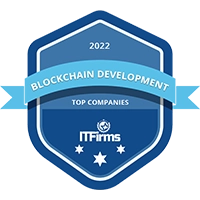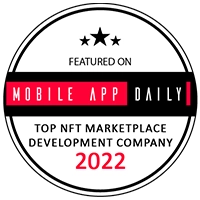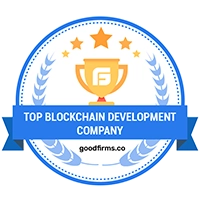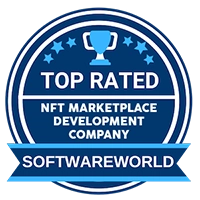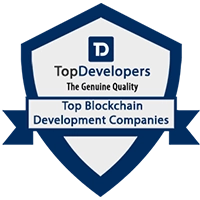Introduction:
In today's fast-paced world, businesses are constantly searching for ways to stay ahead of the curve, and large language models (LLMs) have become their secret weapon. From revolutionizing customer service to automating content generation, companies are leveraging LLM development tools to unlock new opportunities in artificial intelligence. These advanced tools are doing more than just refining code—they're transforming how businesses think about AI. The demand for streamlined, efficient tools is skyrocketing as companies look for ways to simplify LLM-based applications and speed up innovation. After all, who wouldn't want a tool that makes complex AI development feel like a walk in the park?
The Role of LLMs in Shaping the Future of AI Applications
Let's take a step back and think about what LLMs actually do. These powerful models are at the core of many modern AI applications, enabling machines to understand and generate human-like text. Whether it's chatbots answering customer queries, personalized AI agents providing tailored assistance, or content generators churning out blogs and social media posts, LLMs are powering some of the most cutting-edge applications today. They're not just fancy algorithms—they're the brains behind the AI revolution, allowing businesses to scale operations and deliver more personalized, interactive experiences.
Key Categories of Tools for Building LLMs
Building a successful LLM (Large Language Model) isn't just about having the right algorithm—it's like constructing a house. You need the right tools for every step of the process, from laying the foundation to putting on the finishing touches. Let's break down the key categories of tools that LLM developers should have in their toolbox:
Input Processing Tools: Preparing the Data Pipeline
Ever tried making a meal with missing ingredients? That's what it's like trying to develop an LLM without proper data input tools. To put it simply, you need to feed your model the right kind of data to get the best results. Managing diverse inputs, both structured (think databases and spreadsheets) and unstructured (like text documents and PDFs), is crucial.
That's where tools like Databricks and Apache Airflow come into play. They help you load, transform, and prep the data for your model—kind of like chopping veggies before throwing them into a stew. And for dealing with messy, unstructured data, Unstructured.io offers a lifeline. Whether you're pulling in data from reports, PDFs, or text files, these tools ensure everything is clean and ready to go into the LLM development pipeline.
LLM Development Tools: Orchestrating Model Interactions
Once you have your data, it's time to train and fine-tune your model. Think of this like tuning a car engine—you need the right adjustments to get peak performance. For this, Hugging Face, OpenAI API, and LangChain are the go-to tools.
Hugging Face is like the Swiss Army knife of LLM development. It provides pre-trained models, APIs, and even a vibrant community of developers sharing resources. Whether you're starting from scratch or fine-tuning an existing model, Hugging Face has you covered. Then there's OpenAI API, which offers access to powerful language models like GPT, allowing developers to integrate them into their apps with just a few lines of code. And when you need to manage prompts or connect your models to external data sources, LangChain steps in, making the whole process smooth and seamless.
Vector Databases: Storing and Retrieving Knowledge
LLMs don't just generate responses out of thin air—they rely on stored knowledge. That's why vector databases are essential. They store the embeddings (think of them as numerical representations of words or phrases) that LLMs use to find relevant information.
Tools like Pinecone, Weaviate, and pgvector are crucial for efficient knowledge retrieval. Pinecone, for instance, allows businesses to scale up to billions of embeddings with ease, while Weaviate adds the ability to combine vector search with traditional filtering. These databases act like well-organized libraries, enabling your LLM to quickly find the exact knowledge it needs to provide accurate, context-rich responses.
Compute and Training Frameworks: Powering Model Development
Building an LLM is a bit like training an athlete—it takes time, effort, and the right equipment. In the case of LLMs, you need powerful compute frameworks to handle the heavy lifting of model training. This is where cloud infrastructure tools like AWS, Fireworks.ai, and Anyscale shine. They offer scalable compute power, enabling you to train models efficiently without worrying about hitting a wall due to resource limits.
With these tools, developers can scale resources up or down based on their needs, making it easier to handle the computational demands of LLM development. It's like having a gym membership that gives you access to every piece of equipment you need—whenever you need it.
Orchestration Tools: Managing Complex AI Workflows
When you're working with complex LLM applications, you need more than just individual tools—you need something to bring it all together. That's where orchestration tools like LangChain and LlamaIndex come into play.
These tools act as the conductors of your AI orchestra, automating everything from prompt generation to API calls, and even integrating external data sources. Whether you're fine-tuning a model or creating a RAG (Retrieval-Augmented Generation) system, these orchestration tools ensure everything runs like a well-oiled machine. They simplify workflows, allowing developers to focus on innovation rather than getting bogged down in technical details.
Looking to Build a Powerful LLM for Your Business?
Contact UsTop Tools for Building and Fine-Tuning LLMs
Now that we've covered the key categories, let's dive deeper into the top tools specifically designed to unlock the full potential of LLMs. These are the heavy hitters that developers rely on for building, refining, and optimizing their AI models.
Hugging Face Transformers: The Open-Source Giant
When it comes to LLM development, Hugging Face is a name you'll hear again and again—and for good reason. It's the open-source powerhouse that offers everything you need to build customized LLMs. With a library of pre-trained models, easy-to-use APIs, and a robust community, Hugging Face makes it easy to experiment, fine-tune, and deploy models.
Whether you're developing a chatbot, language translation tool, or content generator, Hugging Face gives you the flexibility to tweak the model to your needs. The platform's user-friendly nature makes it accessible even if you're new to LLM development, making it the go-to choice for many developers worldwide.
LangChain: Simplifying LLM Application Development
If Hugging Face is the Swiss Army knife, then LangChain is the tool that brings it all together. LangChain makes integrating large language models into your applications a breeze, handling prompt engineering, data integration, and even chaining multiple models for more complex tasks.
Need to connect your LLM to external databases or APIs? LangChain has you covered. Want to create sophisticated pipelines that process user inputs, retrieve relevant data, and generate responses? LangChain's got your back. It's all about making LLM development more intuitive and less time-consuming, which is why it's become a staple in the AI development world.
Gradio: Build Interactive LLM Demos Without Coding
Want to test out your LLM or share it with others without writing a single line of code? Gradio is your answer. This open-source tool allows developers to create interactive demos in just a few minutes. It's perfect for showcasing models, running experiments, or even getting feedback from users.
Imagine being able to test your model's performance in real-time, tweaking parameters, and seeing how it responds—all without needing to code a complex interface. Gradio's simplicity makes it an indispensable tool for developers who want to quickly create user-friendly applications.
LlamaIndex: Streamlined RAG Application Development
LlamaIndex is designed for those looking to build Retrieval-Augmented Generation (RAG) systems, where the model pulls in specific, context-rich data during its responses. Think of it as a way to supercharge your LLM, making it smarter and more responsive by giving it access to up-to-date, relevant information.
Whether you're building an AI assistant or a chatbot that needs to draw on vast amounts of data, LlamaIndex provides the infrastructure you need to get it done. It simplifies the process of connecting your LLM to external databases, enabling it to generate more accurate and useful responses.
Monitoring and Experimentation Tools: Optimizing Performance in Real-Time
Building LLM applications is a great start, but what's the secret sauce to keeping them running smoothly? The answer lies in monitoring and experimentation tools. Think of these tools as your backstage crew—they're constantly working to ensure everything's running seamlessly. From checking how the model performs to fine-tuning it for better results, these tools are like your personal AI assistants, helping you tweak and improve your LLMs in real-time.
a. Helicone: Monitoring LLM Performance
When it comes to monitoring LLM performance, Helicone is the tool you'll want in your corner. Imagine having a real-time dashboard that shows you exactly how your model is performing—like tracking usage patterns, latency, and other key performance metrics. It's like having eyes on your model 24/7, ensuring that everything is working as it should.
Helicone goes beyond just monitoring; it gives you actionable insights that help you optimize your LLM applications for both cost and efficiency. Let's say you notice a spike in latency—Helicone can alert you to the issue, giving you the data needed to troubleshoot and resolve it quickly. The tool also tracks your model's usage patterns, helping you understand how users interact with it and identify potential areas for improvement. It's not just about knowing what's happening—it's about taking steps to make your application even better.
b. Weights & Biases: Experimentation and Tracking
Now, imagine you're a scientist conducting experiments. You wouldn't just throw things together and hope for the best, right? You'd track every variable, tweak settings, and monitor outcomes. That's exactly what Weights & Biases does for LLM development—it's your experiment tracking tool that helps fine-tune your models with precision.
Why is experimentation so crucial in AI? Because every tweak, every adjustment can drastically improve how well your model performs. With Weights & Biases, developers can systematically experiment with hyperparameters, track performance metrics, and see how changes impact the overall outcome. It's like having a lab assistant who documents every step, making sure you can backtrack or replicate successful results without missing a beat.
This tool doesn't just help with tracking; it helps with improving. By providing a detailed view of your model's training progress and performance, Weights & Biases makes it easy to identify the most effective configurations, allowing you to build smarter, faster, and more efficient LLMs.
Need Expert Help to Develop Advanced AI Solutions with LLM?
Contact UsApplication Hosting and Deployment Tools: From Model to Market
You've built and fine-tuned your LLM, but how do you get it out into the world? That's where hosting and deployment tools come into play. Think of them as the final piece of the puzzle—they make it easy to scale your LLM applications and get them into the hands of users efficiently.
a. OctoML: Deploy LLMs Anywhere, Anytime
One of the biggest challenges developers face is ensuring their LLMs perform well, whether they're hosted in the cloud, on the edge, or even on-device. OctoML solves that problem by offering flexible deployment solutions that let you run your LLMs anywhere, anytime.
OctoML optimizes your models for different environments, reducing latency and boosting performance. Imagine being able to deploy an AI model directly on a user's smartphone or on a server in the cloud—all while ensuring it runs as fast and efficiently as possible. OctoML's versatility makes it easy to scale and adapt, whether you're working with cloud-based applications or edge computing setups. It's like having a tool that perfectly adjusts to any stage, ensuring your LLM delivers top-notch performance no matter where it's deployed.
b. Replicate: Effortless Hosting for Open-Source Models
When it comes to deploying open-source models, Replicate makes life a whole lot easier. Hosting can be a hassle, especially when you're working with large, complex LLMs. Replicate simplifies the process by offering a platform that lets you host and scale LLMs with minimal effort.
The beauty of Replicate is that it takes care of the infrastructure, letting developers focus on what they do best—building great models. Whether you're integrating your LLM into an app or deploying it for real-time use, Replicate's platform ensures smooth, hassle-free hosting. Plus, it's designed to work with open-source models, making it a favorite among developers who want to quickly go from prototype to production without getting bogged down by technical challenges.
Elevate Your Business with Appdupe's LLM Development Solutions
Are you ready to take your AI capabilities to the next level? At Appdupe, we specialize in cutting-edge LLM development that powers advanced AI solutions tailored to your business needs. Whether you're looking to build AI-driven chatbots, automate workflows, or create custom language models, our team of experts is here to make it happen. Let's collaborate to transform your ideas into AI solutions that drive real-world results. Ready to get started? Contact Appdupe today and let us bring your AI vision to life!
Final Thoughts
In conclusion, developing and deploying advanced LLM applications requires more than just coding skills—it's about having the right tools to optimize every stage of the process. From managing data inputs and refining model performance with monitoring tools like Helicone and Weights & Biases, to seamlessly deploying and scaling models using platforms like OctoML and Replicate, these solutions enable businesses to harness the true power of AI. By leveraging these cutting-edge tools, developers can ensure their LLMs not only perform efficiently but also drive real-world innovation and results.



